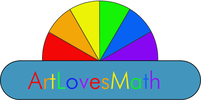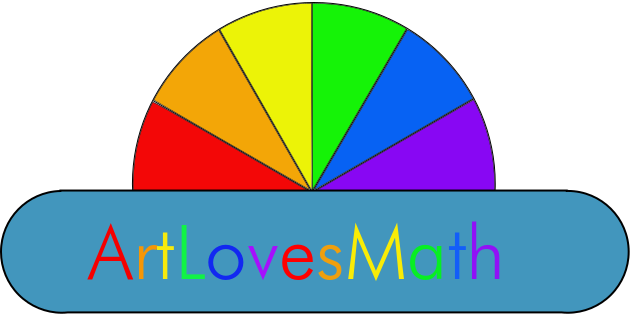Make your words brain-friendly
Research shows children learn from play, and that the best play for learning is guided play with a learning goal. What does this look like? The 3-period lesson is one template for interacting with the young mind in a brain-friendly way - avoiding authoritarian remarks that shut down the neo-cortex, and avoiding pushing answers which the brain needs to create itself.
Here's an example for a preschool lesson on shapes:
For 1st period, give the child blocks that can be held in the hand for each shape. Introduce three at a time. Keep it clean: "This is a circle. This is a square. This is a triangle." Invite the child to repeat the vocabulary and to feel the shapes.
For 2nd period, play games that keep giving multiple-choice type options. "Show me the circle." "Take the square over to the window." "Pick up the triangle and put it on your head". Note mistakes but do not correct them! Instead, take some turns yourself. "You tell me where to carry the circle" is a tactful way to return to 1st period - so tactful in fact that your child won't even notice, though I do like to be careful not to immediately choose to return to 1st period. Take a turn with another shape first. I'll talk more about why not to correct the error, but the short answer is: it stops being fun. Brain-friendly learning happens in the fun zone.
Here's an example for a K-1 unit on Greek architecture:
For 1st period, the adult introduces the vocabulary via a picture or ideally, visits to buildings with columns: "this is a Corinthian column, this is an Ionic column, this is a Doric column".
Let the students describe the differences themselves. 1st period is the place to remember "Let my words be numbered," meaning "let me be pithy"! Vocabulary has a pure power all alone, if you don't smother it with nervous noise.
For 2nd period: visit other buildings and collect photos of buildings, and invite the student to put them in their groups. Have labels of the names, but no other information defining them. Allow the student to sort. Allow yourself to notice errors in silence, and prohibit yourself from immediately correcting your student. To help myself learn, I note the date, the work, and describe errors as "practicing". I also track when and how I return to 1st period.
There's nothing more important than your ability to control your desire to immediately correct the error. If you can't stay quiet and with neutral body-language, your child can't maintain working out of the neo-cortex. This is the part of the brain where learning is built.
Protect your child whenever you see they are quietly focused and in a state of flow, by giving them space for their own thoughts.
Here's an example for a preschool lesson on shapes:
For 1st period, give the child blocks that can be held in the hand for each shape. Introduce three at a time. Keep it clean: "This is a circle. This is a square. This is a triangle." Invite the child to repeat the vocabulary and to feel the shapes.
For 2nd period, play games that keep giving multiple-choice type options. "Show me the circle." "Take the square over to the window." "Pick up the triangle and put it on your head". Note mistakes but do not correct them! Instead, take some turns yourself. "You tell me where to carry the circle" is a tactful way to return to 1st period - so tactful in fact that your child won't even notice, though I do like to be careful not to immediately choose to return to 1st period. Take a turn with another shape first. I'll talk more about why not to correct the error, but the short answer is: it stops being fun. Brain-friendly learning happens in the fun zone.
Here's an example for a K-1 unit on Greek architecture:
For 1st period, the adult introduces the vocabulary via a picture or ideally, visits to buildings with columns: "this is a Corinthian column, this is an Ionic column, this is a Doric column".
Let the students describe the differences themselves. 1st period is the place to remember "Let my words be numbered," meaning "let me be pithy"! Vocabulary has a pure power all alone, if you don't smother it with nervous noise.
For 2nd period: visit other buildings and collect photos of buildings, and invite the student to put them in their groups. Have labels of the names, but no other information defining them. Allow the student to sort. Allow yourself to notice errors in silence, and prohibit yourself from immediately correcting your student. To help myself learn, I note the date, the work, and describe errors as "practicing". I also track when and how I return to 1st period.
There's nothing more important than your ability to control your desire to immediately correct the error. If you can't stay quiet and with neutral body-language, your child can't maintain working out of the neo-cortex. This is the part of the brain where learning is built.
Protect your child whenever you see they are quietly focused and in a state of flow, by giving them space for their own thoughts.
To gradually lead the student towards mastery (of types of columns, in this case), re-introduce the styles casually. "I found a place we can go for a Doric column" or "here's a picture of a Corinthian column - let's make one out of cardboard". Continue to watch the student's progression towards 3rd period.
3rd period is simple. When the student says the answer correctly themselves, easily and automatically, they are in 3rd period - mastery.
Watch out for your desire to push into 3rd period by asking "what's this?" Especially when followed by, "I just told you, think harder", remarks which activate the hippocampus. The student feels the subtle scorn, feels their failure, and even if this isn't delivered in an unkind manner, shuts down for a time. It always takes time, sometimes as much as 20 minutes, for the brain to regain access to the neo-cortex. 20 minutes is a long time out for a lesson to be continuing while a student isn't mentally available.
Find a way instead, to return to 2nd period: is this column an Ionic or a Corinthian?
3rd period is simple. When the student says the answer correctly themselves, easily and automatically, they are in 3rd period - mastery.
Watch out for your desire to push into 3rd period by asking "what's this?" Especially when followed by, "I just told you, think harder", remarks which activate the hippocampus. The student feels the subtle scorn, feels their failure, and even if this isn't delivered in an unkind manner, shuts down for a time. It always takes time, sometimes as much as 20 minutes, for the brain to regain access to the neo-cortex. 20 minutes is a long time out for a lesson to be continuing while a student isn't mentally available.
Find a way instead, to return to 2nd period: is this column an Ionic or a Corinthian?
Time to clean up = time to play math
Each student should have one space where their constructions can stay out for at least a day. Before making a new construction, spend some time with the child organizing the blocks into their sets, ready to return to the boxes. Here we have felt labels which match the blocks. The tiles are great templates for cutting felt! Elementary students can make the labels themselves.
Black and white would be better than the varied colors I have here, but I made these early on, before I figured that out.
Also to note: color names written in careful adult handwriting are better than typed, and labels written by the student are better than having the adult do it. Even just an initial sound can serve as a label in this case. Preschool children may enjoy tracing the word written by the adult, in the color it refers to.
Pay attention to your child's energy level doing this hard mental work! It would be normal for the first build, the picture, to be all a child can concentrate on for one sitting - besides, once it's made and even if you photograph it, it's no fun to immediately take it apart. Let it stay out in a place where it won't be disturbed by pets or be in the way, and at the next work period, invite your child to sort them ready to return to their homes.
There's more to say about doing matrixes with children! But I'll end now with this: logical thinking activities like this are non-threatening and playful! Look around for what else you've got lying around to make them with.
Black and white would be better than the varied colors I have here, but I made these early on, before I figured that out.
Also to note: color names written in careful adult handwriting are better than typed, and labels written by the student are better than having the adult do it. Even just an initial sound can serve as a label in this case. Preschool children may enjoy tracing the word written by the adult, in the color it refers to.
Pay attention to your child's energy level doing this hard mental work! It would be normal for the first build, the picture, to be all a child can concentrate on for one sitting - besides, once it's made and even if you photograph it, it's no fun to immediately take it apart. Let it stay out in a place where it won't be disturbed by pets or be in the way, and at the next work period, invite your child to sort them ready to return to their homes.
There's more to say about doing matrixes with children! But I'll end now with this: logical thinking activities like this are non-threatening and playful! Look around for what else you've got lying around to make them with.
Black Block Horse
Experimented with using a cut-out silhouette in a plastic sheet protector as the design prompt - I built on top of it and then slid the picture out with minimal dislocation. I only did that because I'm using this picture in my upcoming Iron John movie.
Anyhoo, the tally this time is focused on sets and skip-counting practice, with an introduction to remainders.
Anyhoo, the tally this time is focused on sets and skip-counting practice, with an introduction to remainders.
Is Nine Always Nine?
Just knowing that 9 = nine = ********* doesn't mean 4 and 5 year old children understand the math.
Practicing reading.
Children practice reading in gradual stages: first ID'ing just one sound at a time, then working to blend them, then grasping the whole word. Get your zen on, and if the child is in your lap, expect wiggling, because they are working hard!


